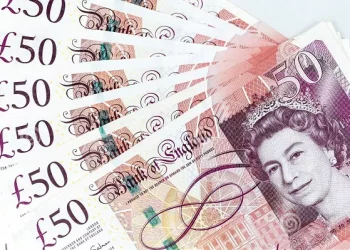In the world of foreign exchange (FX) trading, understanding how to convert currencies is crucial for anyone looking to make informed decisions and manage risk effectively. One such conversion that has gained attention is the exchange rate between the Argentine Peso (ARS) and the US Dollar (USD). In this article, we will explore the significance of converting 1,000 Argentine Pesos to Dollars, discuss the factors that influence the exchange rate between the two currencies, and provide insights for FX traders who want to optimize their strategies when dealing with this pair.
Understanding the Currency Pair: Argentine Peso and US Dollar
The Argentine Peso (ARS) is the official currency of Argentina, while the US Dollar (USD) is the currency of the United States. These two currencies are part of the broader global FX market and are commonly traded in pairs such as USD/ARS. In this case, we are focusing on converting 1,000 Argentine Pesos (ARS) to US Dollars (USD), which is essentially determining how much 1,000 ARS is worth in USD.
The exchange rate between the ARS and USD can fluctuate daily based on various economic, political, and market-related factors. Traders in the foreign exchange market constantly monitor these fluctuations to make informed decisions, whether they are involved in speculative trading, hedging, or other financial activities.
Current Exchange Rate: 1,000 Argentine Pesos to Dollars
Before diving deeper into the factors that influence the conversion of 1,000 ARS to USD, it is important to note that exchange rates are dynamic. They change frequently due to supply and demand for each currency in the global market. As of the writing of this article, the exchange rate for 1,000 Argentine Pesos to US Dollars may vary depending on the platform or market in which you are operating.
For example, as of early 2025, the official exchange rate from the Central Bank of Argentina (BCRA) could be significantly different from the “blue” or parallel market rate, which often trades at a premium in Argentina due to the country’s high inflation and economic instability. At the official rate, 1,000 ARS may equal roughly 5 to 10 USD, but on the parallel market, it could be worth more, reflecting the volatility of the currency.
For FX traders, it is essential to understand the difference between these exchange rates and how they impact conversion. Using the official exchange rate might be suitable for transactions involving government institutions or regulated businesses, while the parallel rate is often more relevant for individuals or traders looking to take advantage of the fluctuating value of the peso.
Factors Affecting the Exchange Rate Between ARS and USD
The exchange rate between the Argentine Peso and the US Dollar is influenced by a multitude of factors, both domestic and global. These factors can lead to significant fluctuations, making the ARS/USD currency pair an attractive option for FX traders. Below are some of the most critical factors that affect this exchange rate:
1. Inflation and Interest Rates in Argentina
Inflation is one of the most significant drivers of exchange rate fluctuations, particularly in emerging markets like Argentina. Argentina has experienced persistent inflationary pressures in recent years, which has weakened the value of the Argentine Peso relative to the US Dollar. High inflation erodes the purchasing power of the currency, leading to depreciation and prompting traders to seek USD as a safe-haven asset.
The Central Bank of Argentina responds to inflation by adjusting interest rates, which can have a direct impact on the value of the ARS. Higher interest rates typically attract foreign investment, increasing demand for the Argentine Peso and potentially strengthening the currency. However, high interest rates can also lead to economic slowdowns and other negative consequences if they are not managed properly.
2. Government Policies and Economic Stability
The Argentine government’s economic policies, including fiscal and monetary policies, play a crucial role in determining the value of the Argentine Peso. Policies such as currency controls, export restrictions, and regulations on capital flows can lead to discrepancies between the official and parallel exchange rates.
For instance, during times of economic instability or financial crises, the Argentine government may impose currency controls to limit the flow of foreign exchange out of the country. This can artificially inflate the demand for US Dollars, leading to a disparity between the official exchange rate and the rate on the parallel market.
Moreover, Argentina’s debt situation, including its relationship with international lenders such as the International Monetary Fund (IMF), can also influence the value of the Peso. If Argentina is unable to meet its debt obligations or defaults on loans, the Peso could face further depreciation, resulting in lower conversion rates for 1,000 ARS to USD.
3. Global Economic Trends and US Dollar Performance
The US Dollar is the world’s reserve currency and plays a pivotal role in global trade and finance. As a result, its performance on the global stage can have a ripple effect on exchange rates, including the ARS/USD pair. For example, when the US economy is strong and the US Dollar is appreciating against other currencies, the value of the Argentine Peso tends to weaken as traders seek the stability of the US Dollar.
Conversely, when the US Dollar is depreciating due to factors such as changes in US Federal Reserve policies, global trade tensions, or geopolitical events, the value of the Argentine Peso could strengthen relative to the Dollar. These global economic trends can be difficult to predict, but experienced FX traders are always on the lookout for signals that might indicate a shift in market sentiment.
4. Commodity Prices and Argentina’s Export Economy
Argentina is a major exporter of agricultural commodities, including soybeans, wheat, and beef. The prices of these commodities on the global market can have a direct impact on the country’s economy and, by extension, the value of the Argentine Peso. When commodity prices are high, Argentina’s export revenues increase, which can lead to a stronger Peso as demand for the currency rises.
On the other hand, when commodity prices fall or when Argentina faces difficulties in its agricultural sector (such as droughts or crop failures), the country’s export revenues may decline, putting downward pressure on the Peso. This can result in a lower conversion rate for 1,000 ARS to USD, as traders anticipate weaker economic conditions.
FX Trading Strategies for Converting 1,000 ARS to USD
For FX traders, converting 1,000 Argentine Pesos to US Dollars is not simply a matter of applying the current exchange rate. There are various strategies that traders use to take advantage of the volatility in the ARS/USD currency pair. Below are some of the most common strategies that traders might employ when dealing with this conversion:
1. Trend Following
One popular strategy for trading currency pairs like ARS/USD is trend following. This approach involves identifying the direction of the market—whether the ARS is appreciating or depreciating against the US Dollar—and then making trades that align with the prevailing trend. For example, if the Argentine Peso is weakening against the Dollar, a trader might buy USD and sell ARS, expecting the trend to continue.
Trend following can be effective in volatile markets like Argentina, where exchange rates can fluctuate significantly over short periods of time. However, traders must be cautious of sudden reversals in the market, as political or economic events can quickly change the direction of the trend.
2. Carry Trade
Another strategy that can be effective when trading the ARS/USD pair is the carry trade. This strategy involves borrowing money in a currency with a low interest rate (in this case, the US Dollar) and using it to invest in a currency with a higher interest rate (the Argentine Peso). The goal is to earn a profit from the interest rate differential between the two currencies.
However, the carry trade strategy can be risky, especially in emerging markets like Argentina, where high inflation and political instability can lead to currency fluctuations that offset potential gains from interest rate differentials. Traders should be mindful of the risks involved and use stop-loss orders to limit potential losses.
3. Hedging
For businesses and traders who are exposed to currency risk, hedging is a strategy that can help manage the risk associated with converting 1,000 ARS to USD. Hedging involves using financial instruments such as options or futures contracts to lock in a specific exchange rate for a future date. This strategy helps mitigate the impact of unfavorable currency movements and provides more predictability for businesses that need to make international payments or investments.
For example, a business in Argentina that plans to import goods from the United States in the next six months may choose to hedge against the risk of a weakening Argentine Peso. By locking in the current exchange rate through a forward contract, the business can ensure that it will not be negatively impacted if the value of the Peso falls in the coming months.
4. Scalping
Scalping is a short-term trading strategy that involves making rapid trades to capitalize on small price movements. In the context of converting 1,000 ARS to USD, scalping might involve taking advantage of short-term fluctuations in the exchange rate. This strategy requires a high level of skill and precision, as well as the ability to react quickly to market changes.
Scalping is typically more suited for traders who can monitor the market closely and execute trades in real-time. Given the volatility of the Argentine Peso, scalpers can potentially profit from short-term movements in the ARS/USD pair.
Conclusion
Converting 1,000 Argentine Pesos to US Dollars may seem like a straightforward process, but it involves a range of considerations for FX traders. The exchange rate between the ARS and USD is influenced by a multitude of factors, including inflation, government policies, commodity prices, and global economic trends. For traders, understanding these factors and implementing effective trading strategies can make a significant difference in maximizing profits and managing risks.
Whether you are a beginner or an experienced FX trader, it is essential to stay informed about the latest developments in Argentina’s economy and the broader global market. By doing so, you can make more informed decisions and navigate the complexities of currency conversion with confidence.
Related Topics:



























